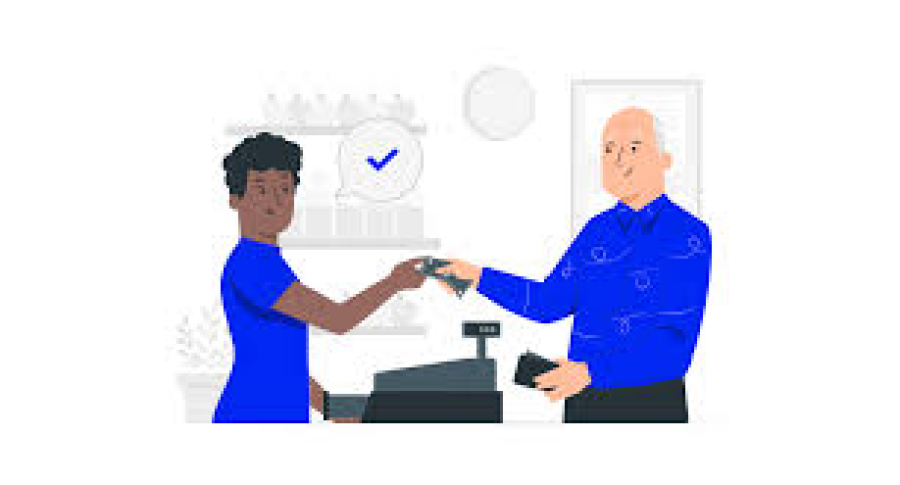The Art of Saying No: Setting Boundaries with Clients
Setting boundaries is a crucial skill for freelancers to master in order to maintain a healthy work-life balance and ensure professional success. On FreelancerBridge, we understand that saying no to clients, while difficult at times, can be essential for preserving your time, energy, and mental well-being. This guide explores the art of setting boundaries with clients, offering actionable tips to say no gracefully without jeopardizing future work opportunities.
Long Description:
As a freelancer on FreelancerBridge, you are your own boss, which means it's your responsibility to set clear boundaries that protect your personal time and professional integrity. While it can be uncomfortable to turn down a client or a project, learning how to say no in a respectful and professional manner is key to long-term success. By establishing boundaries early on, you can manage expectations and avoid burnout, ensuring that your freelancing career remains sustainable.
In this guide, we’ll cover the essential steps to master the art of saying no to clients, and we’ll provide practical strategies for managing client requests, navigating unrealistic expectations, and maintaining a professional demeanor while protecting your time and resources. Whether it's turning down a project that doesn't align with your skills, managing last-minute requests, or setting limits on your availability, these tips will help you set healthy boundaries that allow you to thrive as a freelancer on FreelancerBridge.
1. Recognize Your Limits
- Why It’s Important: Knowing your capacity ensures you only take on work you can handle without compromising quality.
- What You Should Do:
- Take time to assess your workload before committing to new projects.
- Identify which types of projects drain your energy or don’t align with your expertise.
- Quick Tip: Learn to say no early in the process—when a client first asks, rather than after agreeing to terms.
2. Be Transparent and Honest with Clients
- Why It’s Important: Transparency builds trust and maintains your professional reputation while ensuring clear expectations are set.
- What You Should Do:
- Politely explain why you can’t take on a project, offering reasons that respect your time and expertise.
- If necessary, provide an alternative suggestion or timeline that works for you.
- Quick Tip: Always be respectful in your response, ensuring that the client understands that it's not a rejection of them, but rather your workload.
3. Practice Saying No Politely
- Why It’s Important: A polite “no” preserves relationships and keeps the door open for future opportunities.
- What You Should Do:
- Use phrases like “Unfortunately, I’m unable to take on additional work at this time” or “I’m currently at full capacity and can’t commit to this project.”
- Avoid apologizing excessively or giving too many excuses, as it can make you seem unsure.
- Quick Tip: If you’re unable to accept the project, offer to recommend another freelancer who might be a good fit.
4. Set Clear Expectations from the Start
- Why It’s Important: Establishing clear boundaries in advance prevents misunderstandings and ensures clients respect your time.
- What You Should Do:
- Include your availability, turnaround times, and scope of services in your initial communications.
- Use FreelancerBridge's project contracts and agreements to define terms and boundaries clearly from the outset.
- Quick Tip: Setting these expectations early helps prevent scope creep and avoids feeling pressured into taking on too much.
5. Learn to Say No to Scope Creep
- Why It’s Important: Scope creep—where a project expands beyond the original agreement—can lead to burnout and resentment.
- What You Should Do:
- Politely remind the client of the agreed-upon scope and offer to renegotiate terms if the project evolves.
- Use clear contracts to outline deliverables and timelines, making it easier to refer back to when necessary.
- Quick Tip: If a client requests additional work, be clear about extra fees or time needed.
6. Know When to Step Away from a Client Relationship
- Why It’s Important: Some clients may consistently overstep boundaries, leading to stress and dissatisfaction.
- What You Should Do:
- If a client is continually disrespecting your boundaries, consider whether it's worth continuing the relationship.
- If necessary, politely end the collaboration and explain your reasons professionally.
- Quick Tip: Always remain professional and respectful in ending a relationship, leaving the door open for potential future work.
7. Use FreelancerBridge Tools to Manage Boundaries
- Why It’s Important: FreelancerBridge offers tools to manage client expectations and communicate boundaries clearly.
- What You Should Do:
- Utilize the platform’s messaging system to communicate your boundaries effectively.
- Set project timelines, availability, and milestones through FreelancerBridge's features to keep everything organized and clear.
- Quick Tip: Use the project management tools to outline your time commitments and avoid overbooking yourself.


 by Emily
by Emily




